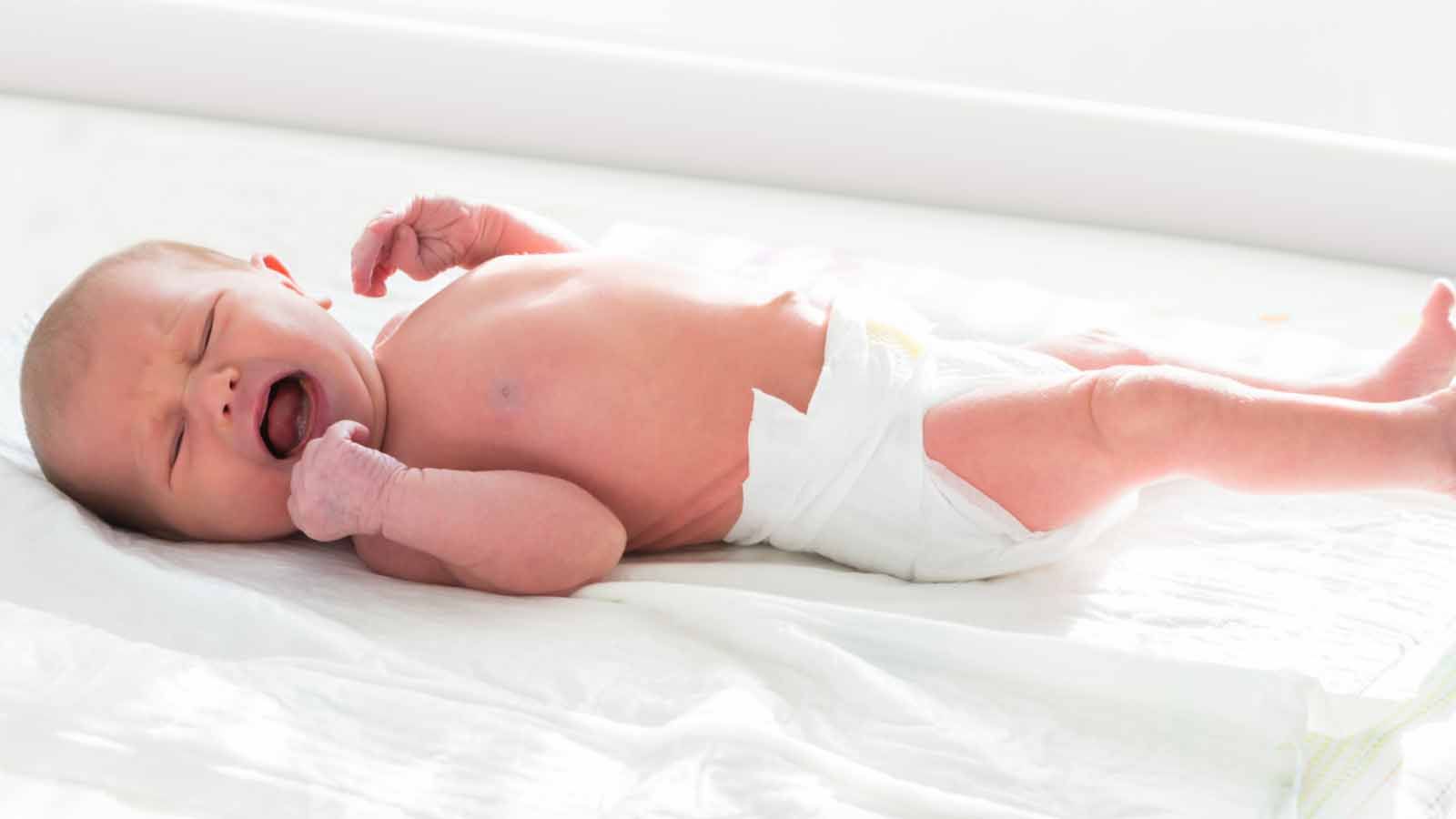Why Does My Get Startled?

You have done it all. Your baby has been fed, has a clean diaper, and you are finally able to put her down for a peaceful rest when all of a sudden, something startles her (even though you were as careful and gentle as possible and the room is extra dark and quiet). You watch her arms and legs extend out quickly, she may gasp or let out a little whimper or cry and then just as quickly as her body jerked, she pulls her arms and legs back into the original position. Sometimes she may need to be soothed and other times she goes right back to sleep. She doesn’t seem very bothered by that sudden startle but it gets you thinking- what the heck just happened?! Did she have a nightmare that someone is taking her bottle away, is she scared of the dark? Does she feel like I'm abandoning her? Is she okay?
Stay calm! What just happened is completely normal and means that your baby’s nervous system is doing just what it’s supposed to be doing.
This startling response is called the Moro Reflex.
Also known as the startle reflex. This along with rooting, palmer grasp, and tonic neck, are primitive reflexes babies are born with. They originate from the brain stem to create involuntary movement responses for survival instincts. The Moro reflex’s specific purpose is to help baby reach out to cling to her mother if she is in fact falling. At around 2 months, this reflex starts to diminish and should be completely gone by 6 months. As the brain and nervous system mature, the primitive reflexes are replaced with voluntary, controlled movements.
The Moro is elicited when baby is startled by loud noises, intense light, or a sensation of falling. Babies can even elicit this reflex on their own if they move suddenly. Your pediatrician will be checking for this reflex, along with the others mentioned above, during the first several well check ups by trying to mimic the sensation of falling. So don’t worry, your baby isn’t scared of the doctor just yet- it’s the reflex kicking in!
When do you see the startle?
You’ve been rocking your baby to sleep for what seems like hours and he finally calmed down and drifted off. You reach over the crib to place him down nice and gently, and all of a sudden he startles and wakes. Thank you, Moro Reflex! Or you might be on a nice walk in the neighborhood with your sleeping baby in the stroller when you hit a bump on the sidewalk, hello Moro Reflex! Bright lights, shocking noises, changes in position and even movements babies do on their own can trigger this reflex. So don’t worry if you see it appear when your baby is just chilling on the floor.
What should you do to prevent it?
There’s no need to prevent this reflex from happening during wake windows as it’s part of typical development. The presence of primitive reflexes demonstrate that your baby has a healthy nervous system. However, in order for it to integrate as it’s supposed to over the next several months (that means the nervous system matures and no longer needs this reflex) babies need lots of free movement time and opportunities to stretch out. However, the Moro Reflex can cause babies to wake themselves up during longer sleep cycles. Swaddling can help prevent those jerky movements during sleep, preventing the moro from being elicited. Baby (and you!) will get a better sleep stretch if the startle reflex can be avoided for a few hours.
When should I worry?
The presence of the Moro Reflex is not worrisome. However, the absence of this reflex is. Take note if your baby does not exhibit this startling response to changes in movement or other strong stimuli. This reflex should also look symmetrical on both the right and left sides of the body and should be gone by 6 months. If you continue to see it beyond this age, check in with your pediatrician.
Bottom line:
The Moro Reflex may look startling (hahaha so PUNny), but it’s actually a good thing. It means your new baby has this primitive response that babies should be born with. The purpose of primitive reflexes is to provide the most vulnerable among us with survival instincts. The Moro allows baby to instinctively reach out for help when startled or feeling the sensation of falling. With plenty of floor time to stretch out, baby’s movements will start to become less reflexive and more controlled. The startle response from the falling sensation or loud noises should begin to disappear at around 2 months and fully integrate by 6 months. If you continue to notice the Moro Reflex at 4 months, or you notice the reflex looks asymmetrical between the right and left sides of the body, please reach out to your pediatrician.
Want to learn more about your baby’s development and activities you can be doing to support that growth? Check out my membership!





